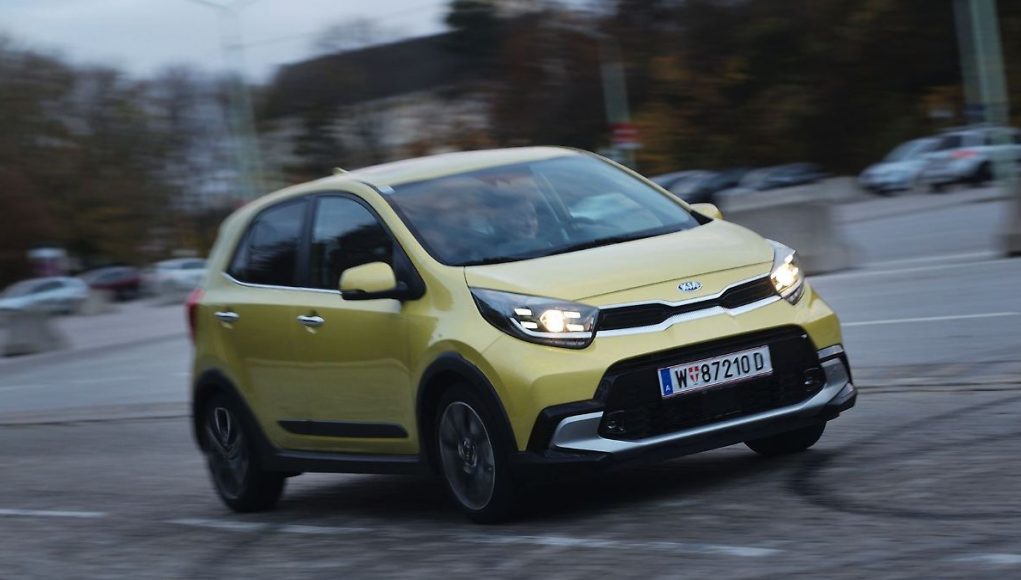Used car check
Kia Picanto – short and sweet, almost free of defects in the TÜV
This audio version was artificially generated. More info | Send feedback
Seven-year warranty ex works – that's even an argument for those interested in used cars. And when it comes to the TÜV, there isn't much to complain about with the younger Kia Picantos.
The Kia Picanto is well under four meters long and therefore competes in the so-called small car segment. Young vehicles in particular perform well in the general vehicle inspection (HU). But the “Auto Bild TÜV Report 2024” also sees the predecessor of the current generation as a recommendable used car. It is also cheaper than the third edition, which has so far been quite stable in value.
Model history
The first Kia Picanto came onto the market in 2004, the successor generations in question in 2011 and 2017. Number two received its facelift in 2015: retouched front design, all engines from now on meet the Euro 6 standard, daytime running lights in LED technology.
The third edition was equipped with new technology, including large touchscreen navigation, autonomous emergency braking and a keyless entry system. Air conditioning was now standard equipment. The model update followed in 2020.
Body and variants
The Picanto ranks among the small cars. It always has a hatchback, but the third edition is only built as a five-door model. Before that, the Kia also rolled off the assembly line as a three-door model. The second generation was also offered with a combined petrol/autogas engine, good for a range of around 1000 kilometers.
In 2018, the South Korean manufacturer launched two new variants: the sportier GT and the Picanto X-Line with SUV elements such as more ground clearance, plastic planks and a hint of underrun protection.
Dimensions (according to ADAC)
- second generation: 3.60 meters x 1.60 meters x 1.48 meters (L x W x H), trunk volume: 200 to 870 liters (LPG version: 151 to 821 liters).
- Third generation: 3.60 meters to 3.67 meters x 1.60 to 1.63 meters x 1.49 to 1.50 meters (L x W x H), trunk volume: 255 to 1010 liters
Strengthen
According to the “Auto Bild TÜV Report 2024”, the current series hardly shows any weaknesses. Thanks to the HU, it has so far been almost free of defects when it comes to the chassis. Brake components and exhaust system perform well and oil loss rarely occurs.
The predecessor stands out positively with almost defect-free steering systems and drive shafts. Brake hoses and low beams remain inconspicuous, which also applies to the indicators of all years of manufacture.
weaknesses
The current Picanto has a slightly above-average complaint rate when it comes to low beam, which is the only noticeable weakness so far. From the third HU when the vehicle was seven years old, its predecessor was often plagued by ailing brake discs and fiddly parking brakes.
At the same time, criticism of the axle suspensions also increased. In the fourth HU, the rear lighting is often defective. And on the fifth check it often fails the emissions test (AU).
Breakdown behavior
In the ADAC breakdown statistics, which show vehicles up to their first registration in 2020, only the 2020 Picantos land in good places, the others in the middle. The main breakdown areas are therefore: starter motor (2011), batteries (2011 to 2019) and spark plugs (2012 to 2016).
Engines
- second generation: petrol engine (three- and four-cylinder with front-wheel drive): 49 kW/66 HP to 63 kW/85 HP; LPG/petrol version (three-cylinder): 49 kW/67 HP to 60 kW/82 HP
- Third generation: petrol engine (three- and four-cylinder with front-wheel drive): 49 kW/67 hp to 74 kW/100 hp
Dealer Sales Value According to the Deutsche Automobil Treuhand (DAT) with statistically expected kilometers – three price examples:
- Picanto 1.0 Attract, three-door (6/2015); 49 kW/67 HP (three-cylinder); 96,000 kilometers; 4067 euros
- Picanto 1.2 GT-Line ISG (6/2017); 62 kW/84 HP (four-cylinder); 76,000 kilometers; 9523 euros
- Picanto 1.0 TGDI X-Line (6/2021); 74 kW/100 HP (three-cylinder); 33,000 kilometers; 15,846 euros































